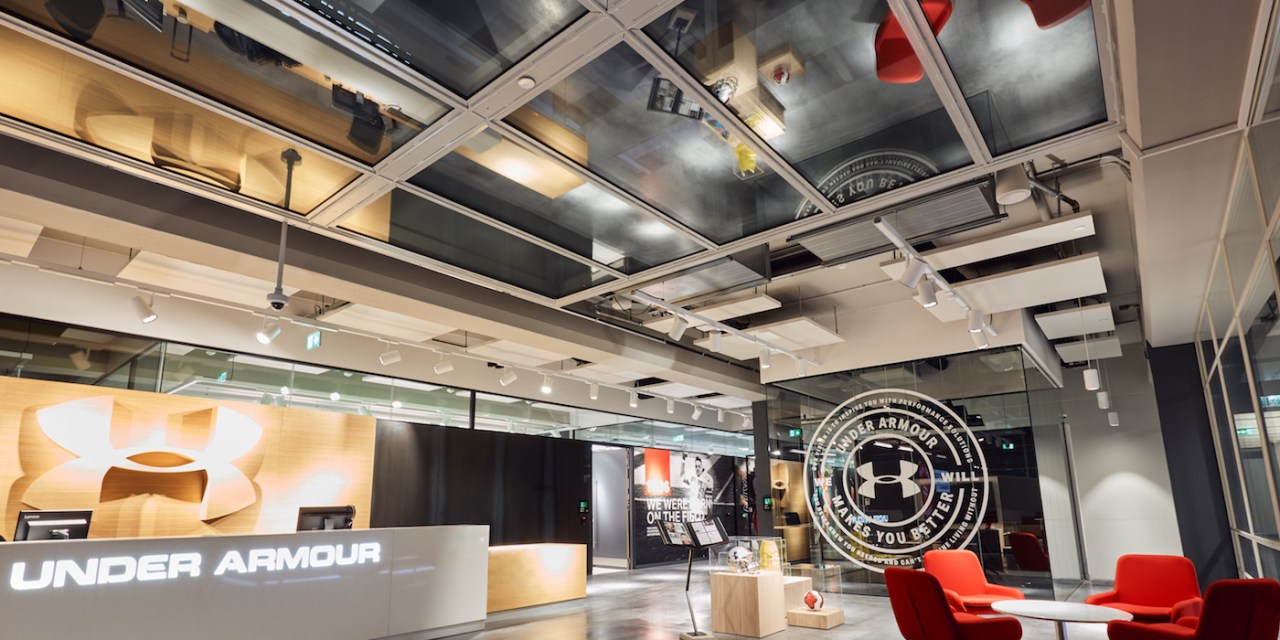Why Under Armour is struggling with its direct-to-consumer business

Under Armour’s efforts to grow a DTC business are running into some issues.
Under Armour, like many other brands that have relied historically on wholesalers to sell its product, wants to generate more revenue from its own website and stores. It has a relatively sizable store fleet — 370, out of which 263 are outlet stores.
But, its direct-to-consumer business has struggled for a couple of reasons. The first is that Under Armour’s sales continue to decline in North America as more shoppers favor casual athleticwear or athleisure, instead of Under Armour’s very technical fitness gear, which is marketed as being for the athlete that wants to perform better. During its third-quarter earnings earlier this month, Under Armour reported revenue of $1.4 billion, down 1% compared to the same period last year, with wholesale sales down 2% and direct-to-consumer sales down 1%. DTC represented 32% of Under Armour’s revenue during the third quarter, or $463 million.
Second, Under Armour has tried to cut back on the amount of discounts it offers on its website, and steer more shoppers towards its full-price stores, in order to improve margins. But in the short-term, that is turning off some shoppers — COO Patrik Frisk said that during the third quarter, while traffic was up on Under Armour’s website, conversions were down.
In order to right the ship, Under Armour is looking to open more full-price stores, continue to highlight the technical innovation in its apparel and performance wear, and build a new e-commerce platform. But it’s not clear if that alone will be enough to boost Under Armour’s direct-to-consumer business.
Meanwhile, its biggest competitor Nike is working to boost its direct-to-consumer business by making more exclusive product available in its family of apps, in order to encourage customers to shop through its properties for. Until Under Armour can position itself as a more premium brand, it makes it more difficult for the brand to follow the playbook of Nike of boosting its direct-to-consumer sales by offering exclusive product in certain stores or to smaller, more loyal groups of customers. Under Armour also risks losing some customers to more athleisure-focused brands like Lululemon.
“Under Armour’s brand is focused a lot on sports and doesn’t lend itself to every day buying,” said Neil Saunders, managing director of GlobalData Retail.
Ad position: web_incontent_pos1
It’s coming at a time of change for Under Armour. The company is preparing for founder Kevin Plank to step down as CEO come January, and news broke earlier this month that the Securities and Exchange Commission is looking into the company’s accounting practices.
In light of the news that the SEC is looking into Under Armour’s accounting practice, the Wall Street Journal reported last week on some of the tactics Under Armour has relied on over the past several years to boost sales towards the end of the quarter — redirect products intended from its own stores to off-price outlets, to immediately bank that revenue, as well as encourage wholesale partners to take more product earlier in exchange for a discount.
Under Armour, has said in subsequent statements that “we firmly believe that our disclosures and our accounting practices have been entirely appropriate,” and that it’s cooperating with the SEC. Analysts describe the practices described by the Journal as standard for the retail industry.
But the Journal’s story highlights why brands like Under Armour increasingly want to move away from wholesale. One of its biggest partners Dick Sporting Goods reportedly got irritated when Under Armour struck a deal with Kohl’s to carry its product after another wholesaler, Sports Authority, went bankrupt. By selling more direct-to-consumer, Under Armour can better control its own destiny in theory.
But, the direct-to-consumer business is also expensive, as it requires a brand to invest more in its own stores and marketing. As a result, Under Armour’s biggest problem is that many of its direct-to-consumer sales come from outlet stores, which carry products at a lower price.
Ad position: web_incontent_pos2
While Under Armour seeks to open more full-price stores, it’s also tried to scale back on discounts. Frisk said in May said that it cut its promotional days by three during the first quarter of this year. “We’re going to drive this brand to a more premier positioning again and we’re absolutely determined to do that,” Frisk said during the company’s third-quarter earnings call.
In order to better position itself as a premium brand, Under Armour is relying on its deals with high-profile athletes and celebrities, like Steph Curry and Dwayne Johnson, as well as highlighting the technical innovation in some of its newer marquee products. That includes a new line of training apparel that has infrared technology, which the company claims will improve oxygen flow. Under Armour’s also tried to highlight its technical capabilities with some more out-there partnerships, like inking a deal with Virgin Galactic to make space suits that passengers will wear for a flight that’s targeted for next year.
“I think it’s unclear on who exactly Under Armour is targeting currently — it feels like they are continuing to dabble in a variety different sports,” said Brian Quarles, chief creative officer for sports marketing agency Revolution said.

